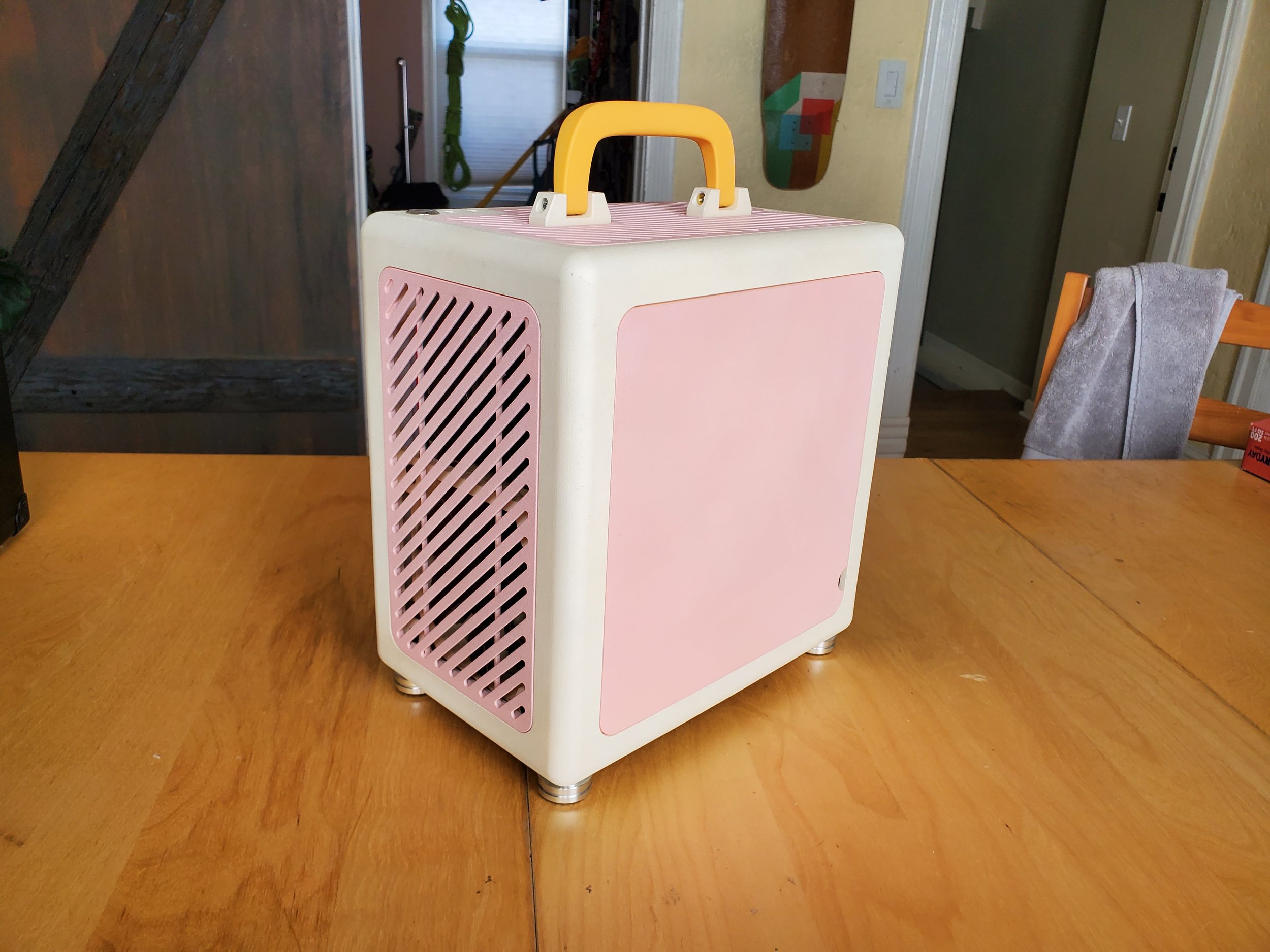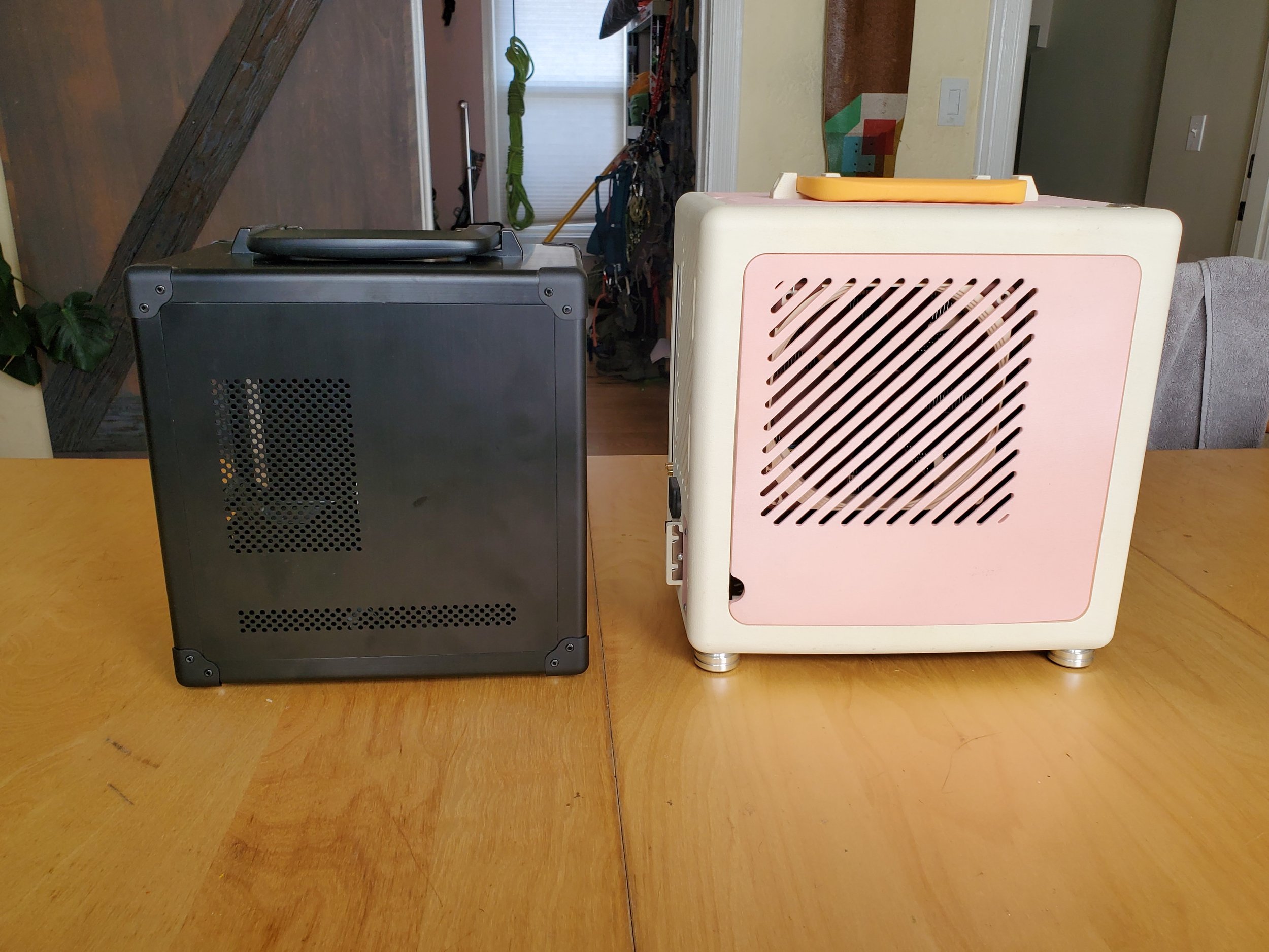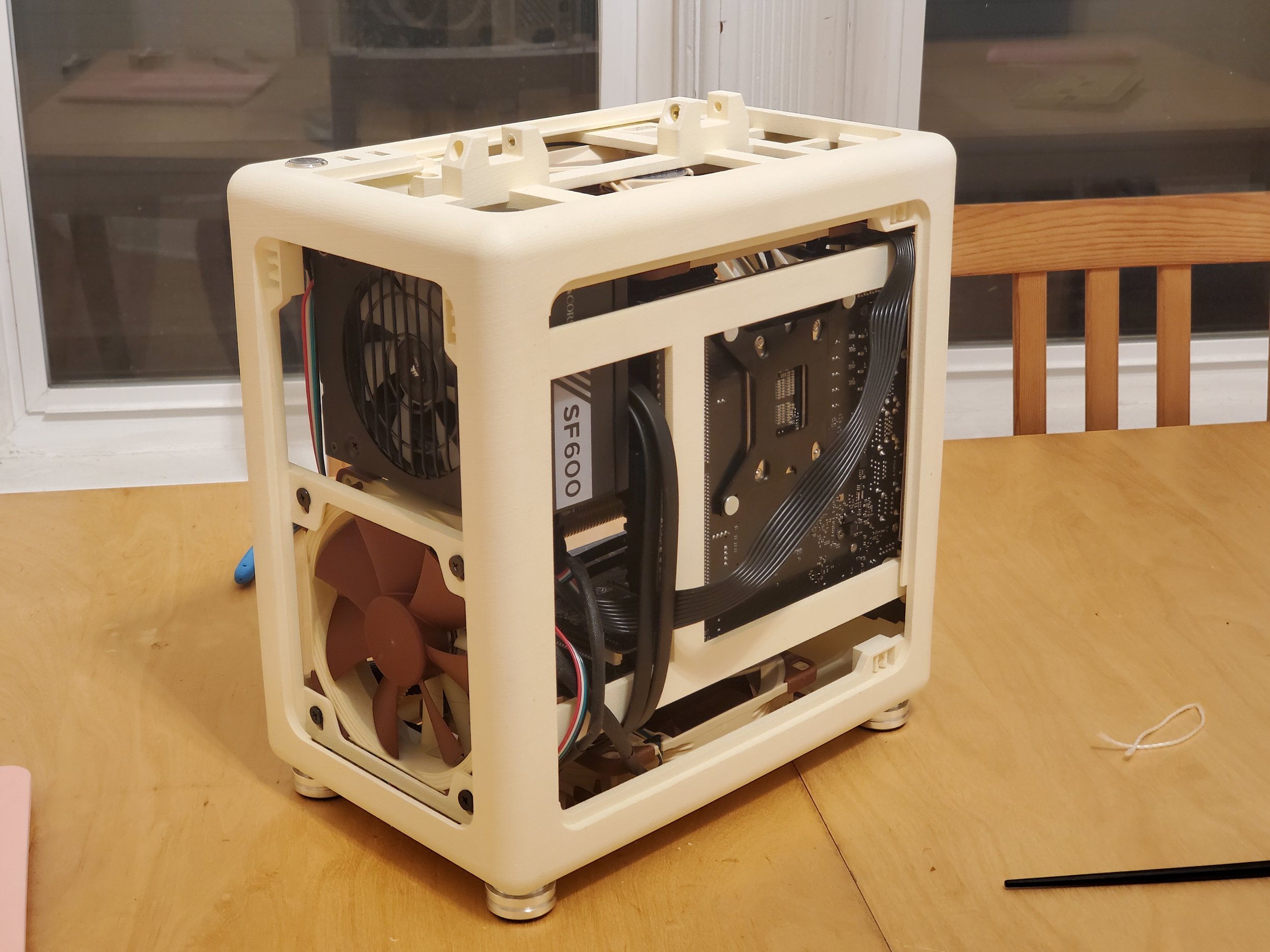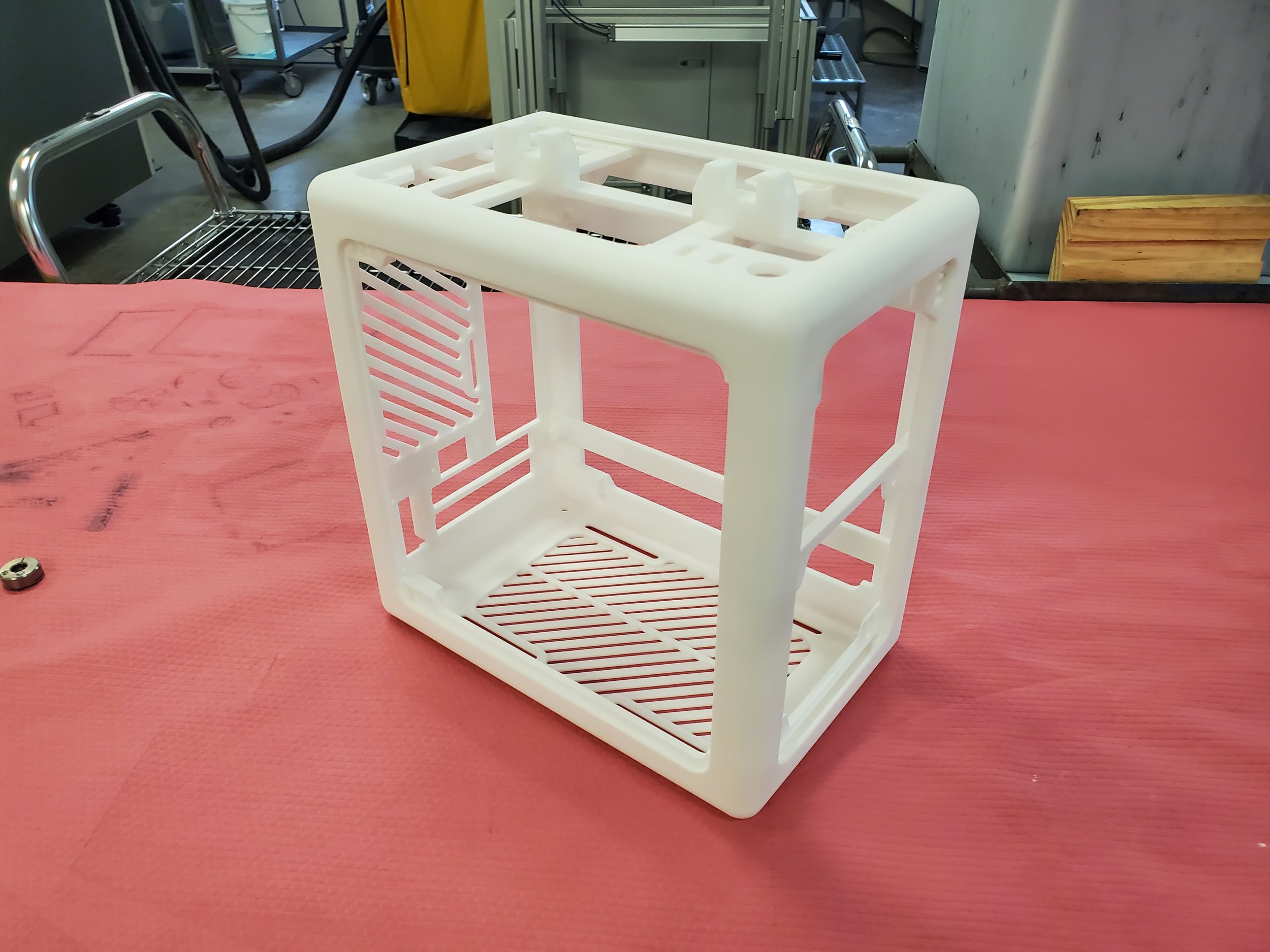
The Toaster v2
Like most things, it all began with some inspiration.
The Lian Li PCTU100 is a cute, little Mini-ITX form factor PC case. Measuring only 10” on it’s longest side, this things is SMALL. At the time, I was happy with what I had and pleasantly enjoyed trying to stuff tiny components into the already existing computer case.
What was I going to do with a secondary desktop PC?
Who knows.
My original build inside the PC-TU100B. (“Tiny Keeb, Tiny Comp.,” 2018)
This build was dubbed “The Toaster” for its unique formfactor and being hot to the touch.
Due to its size, the hardware support was lacking. Only sporting up to a 60mm CPU cooler height, a single 2.5” drive in the top, single-fan GPUs only, and merely one intake fan in the front with no active exhaust. While there are many ITX cases on the market, this one truly commits in that direction by excluding use of full sized power supplies, full sized graphics cards, and anything larger than stock intel CPU coolers.
To achieve adequate thermal performance some modifications had to be made. This included drilling ventilation holes, adding mounting holes for a “slim” 140mm fan and adding feet intended for a guitar amplifier to make breathing room for bottom intake.
I never claimed to be a great craftsman.
Shortly after its conception and photographing, this build was sold as it was occupying most of my net worth at the time. Turns out the joy was in component selection, building, and modding, not in owning.
Size comparison, drill holes, component list, and showy picture next to my keyboard.
Incomes the 3D printed PC Case.
Round 2 of the mini-ITX toaster, I thought I would put my own twist on the configuration.
While I am taking inspiration from the original build this one was going to need some more breathing room. The primary goal of this case is to increase the cooling capacity by designing around fan placement and inclusion as well as dramatically increasing the clearance for a larger, more capable CPU cooler.
Primary Changes to the overall construction:
Power supply was moved from the side of the case to the front to make room for a larger CPU cooler.
I/O panel was moved to the top near the power supply to make room for the air intake of the power supply and a front fan to blow directly on to the graphics card.
A bottom fan mount was added to the bottom to assist cooling the graphics card.
A top fan mount was added to assist in exhaust.
A rear 92mm fan was added to assist in exhaust, though this was not utilized in the final configuration as I felt it only added more noise.
Larger CPU cooler act as another intake for the system.
While TDP (thermal design power) is sometimes said to be a poor metric for measuring the cooling capability of CPU coolers, within the same brand I think the comparison holds some weight. In the original build, the PCU cooler had a 65 Watt TDP, while the new configuration boasts a 145 Watt TDP. Minimally, there are more fins, more heat pipes, and the fan is upsized from a slim 90mm fan to a full sized 140mm fan. Sounds better to me. (Noctua L9i vs. C14S)
Additionally, the CPU cooler will face a source of fresh air from outside the case rather than sucking on the back of the hot power supply as it was before.
USB ports and bulkhead power buttons are simple purchase components that can be had in many shapes and sizes.
Airflow diagram for new design configuration. Blue arrows are intake, red arrows are outlets.
Fan sizes noted.
Incomes the 3D printed PC Case.
Round 2 of the mini-ITX toaster, I thought I would put my own twist on the configuration.
While I am taking inspiration from the original build this one was going to need some more breathing room. The primary goal of this case is to increase the cooling capacity by designing around fan placement and inclusion as well as dramatically increasing the clearance for a larger, more capable CPU cooler.
Up from 10”, this one of a kind, custom case will measure 11” on it’s longest side while maintaining the square side-profile for cosmetic effect.
Using a slim extension cable to a bulk-head fittings, the power supply (PSU) was moved from the side of the case to the front of the case making more “headroom” over the face of the motherboard for a much larger cooler.
While TDP (thermal design power) is sometimes said to be a poor metric for measuring the cooling capability of CPU coolers, within the same brand I think the comparison holds some weight. In the original build, the PCU cooler had a 65 Watt TDP, while the new configuration boasts a 145 Watt TDP. Minimally, there are more fins, more heat pipes, and the fan is upsized from a slim 90mm fan to a full sized 140mm fan. Sounds better to me.
Additionally, the CPU cooler will face a source of fresh air from outside the case rather than sucking on the back of the hot power supply as it was before.
While the graphics card is the same as in V1 (for cost effective reasons) there is plenty of thermal headroom in the case for future upgrades.
Not only is the CPU cooler much more capable, modern day CPUs that are adequate for for gaming purposes can perform with less thermal output. Additionally, with removal of the front fan, there is enough space for a larger GPU. All of this to say, this case has plenty of hardware life ahead of it.
Full assembly CAD model, top. Built assembly, bottom.























